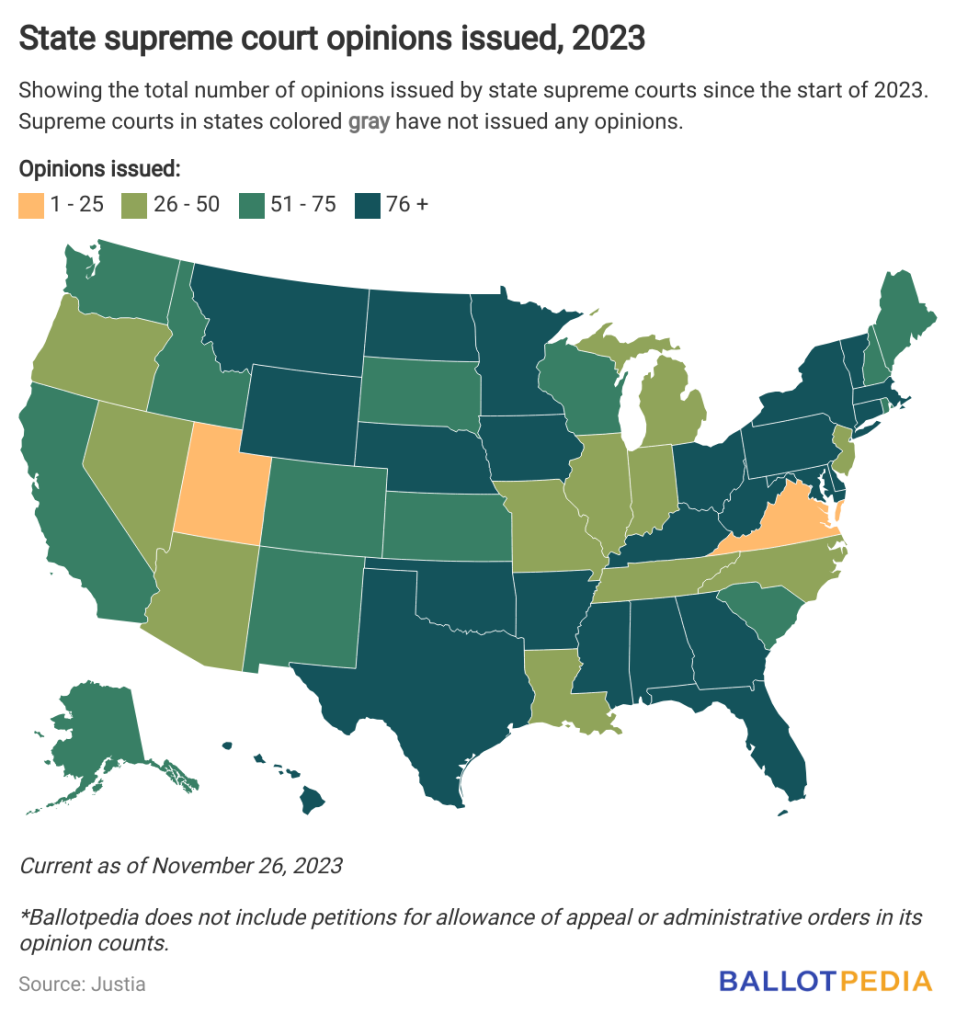State supreme courts issued 108 opinions from Nov. 20-26. The Pennsylvania Supreme Court led the field with 25 opinions issued, followed by New York with 18 and North Dakota with 12. Last week's 108 opinions account for 2% of the year-to-date total of 6,079. The Supreme Court of Appeals of West Virginia leads with 528 opinions issued since Jan. 1, followed by Texas with 423 and Delaware with 387.
State supreme courts have issued an average of 129 opinions per week so far this year. This figure is less than the 2022 weekly average of 143. It’s also less than the average of 160 opinions issued per week in 2021.
Supreme courts in two states have issued fewer than 25 opinions since the start of the year, while supreme courts in 24 states have issued more than 76 opinions during the same time period.

Some of the state supreme court opinions issued this year include those in:
- Pennsylvania, where the court found that PennDOT, the state's highway agency, had "the authority to pursue a potential suspension of a major construction contractor based in Centre County after it was accused of millions in theft from employees;"
- Idaho, where the court ordered the state attorney general "to provide new short and general ballot titles that comply with Idaho law" in a case involving a ballot initiative that would end closed primaries; and,
- California, where the court ruled that "customers cannot sue the utility [Pacific Gas & Electric] over safety-related power shutoffs."
Supreme courts in Pennsylvania, West Virginia, Texas, and Delaware regularly end the year as some of the country's most active courts. Collectively, they accounted for 26% of all opinions issued in 2021 and 2022, and, to date, 28% in 2023.

Every state and the District of Columbia have at least one supreme court, known as a court of last resort. Oklahoma and Texas have two courts of last resort, one for civil cases and one for criminal proceedings. Supreme courts do not hear trials of cases. Instead, they hear appeals of decisions made in lower courts. The number of justices on each state supreme court ranges between five and nine.
In 2020, we conducted a study identifying the partisan balance on every state supreme court. You can find that research here. We also identified which justices ruled together most often in our Determiners and Dissenters report found here.


